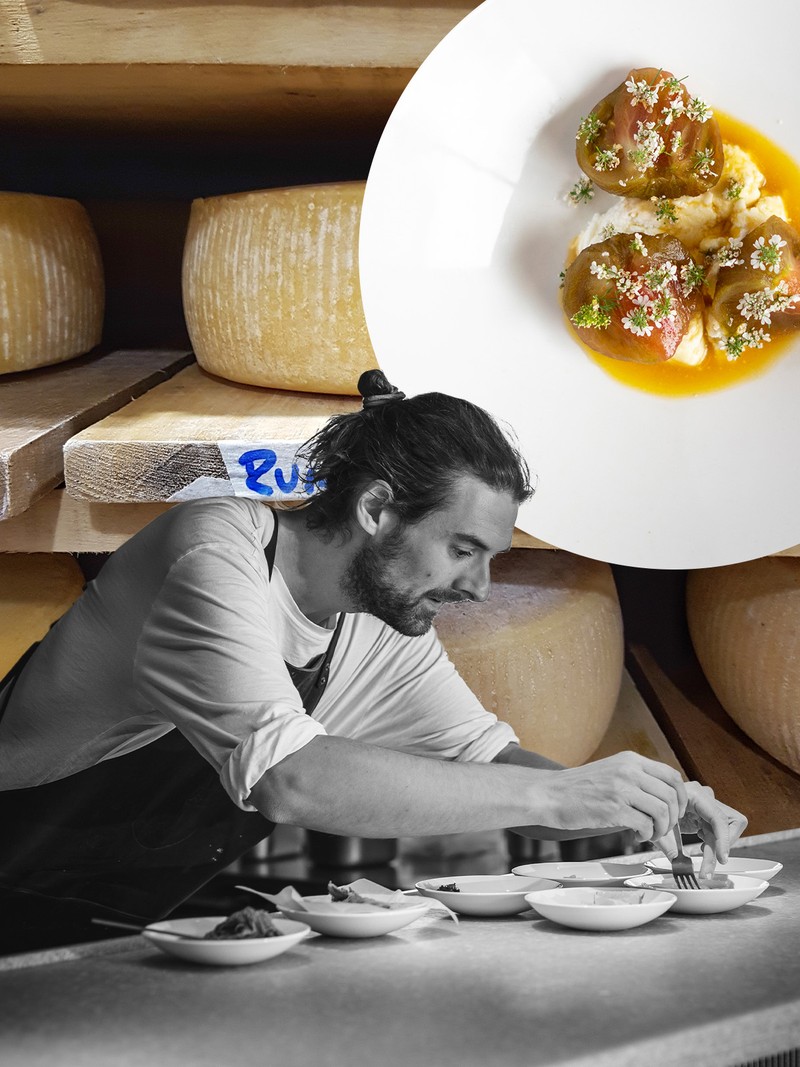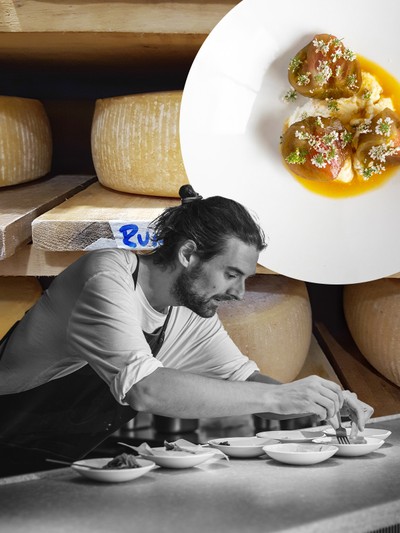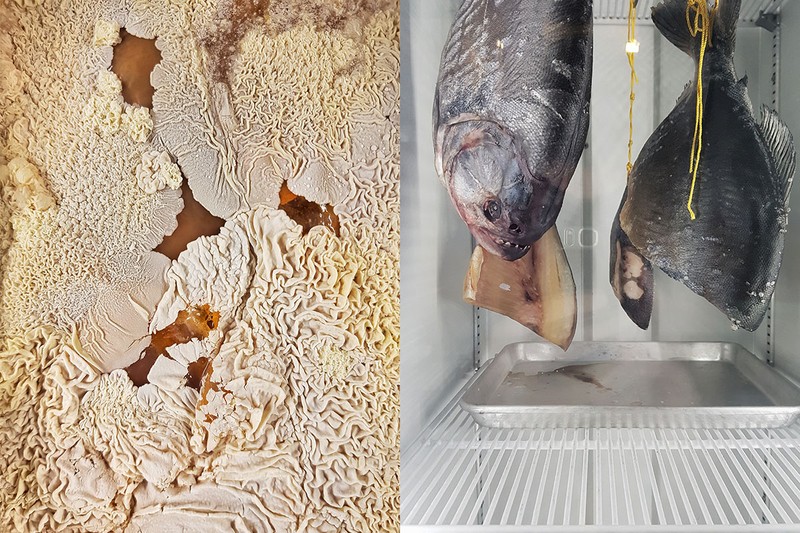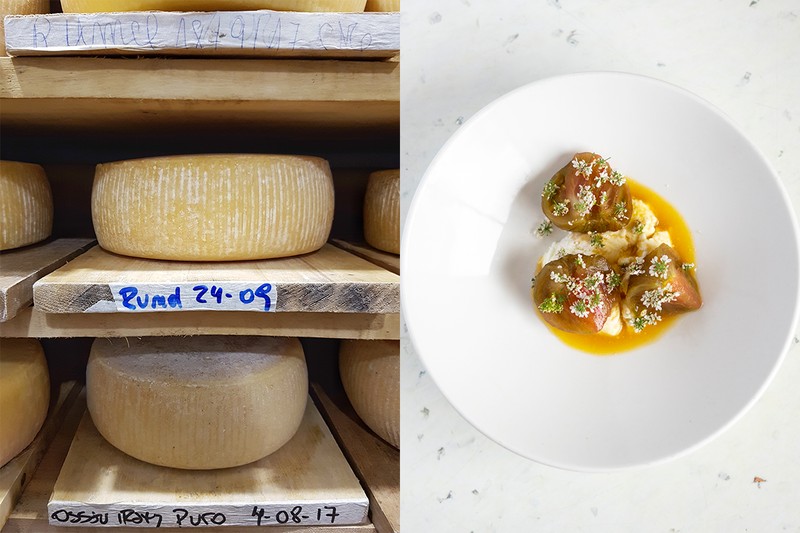

SLMan Meets… The Chef-Scientist Making Fermentation Cool
What drew you from the lab into the kitchen, Johnny?
I studied chemistry at university and went on to do a PhD in material science, which sits somewhere between chemistry and physics. But by the time I finished, I knew academia wasn’t for me. I’d always wanted to work in food, so I threw myself into the culinary world – I started working for free in restaurants and eventually landed a placement at Noma’s Nordic Food Lab. I started researching butter – ageing, fermenting, culturing it – and I fell headfirst down the rabbit hole of fermentation. What blew my mind was realising how many of the world’s best-loved foods are fermented. Coffee, chocolate, soy sauce, miso, wine – they all owe their flavour to microbes. I’d grown up baking bread and making yoghurt with my gran, but I’d never thought of it as fermentation. It felt like this hidden layer of food was suddenly revealed. And because I had a scientific background, I found I could really help chefs understand what was happening at a microbial level – and crucially, make things more delicious.
But we’ve been fermenting our food for a while, right?
Fermentation is deeply ancient – we’ve been fermenting since before agriculture, and possibly even before language. Our ancestors weren’t making kombucha for the wellness crowd – they were trying to survive the winter. Fermentation was a way to preserve food, alongside things like salting, smoking and drying. But fermentation is also an incredibly modern tool. What’s happening now is less about rediscovering something old, and more about realising how powerful and versatile these techniques are. Like having a great knife or pan, fermentation is just another tool in the kitchen. Whether you’re a Michelin-starred chef or a home cook, you can use it to create extraordinary flavours.
How do fermented foods support wellbeing?
Studies into the gut-brain axis have made people sit up and pay attention. We now understand the trillions of microbes living in our bodies, especially in the gut, are connected to everything from immunity to mood and metabolic health. So, fermentation has this beautiful dual benefit: it creates delicious food, and supports better health.
What are some of the most compelling studies you’ve come across?
The science is really gaining momentum. For example, NHS doctors are now prescribing kefir to patients with IBS. We’re also seeing clinical use of things like fecal microbiota transplants (FMTs), where stool from a healthy donor is transplanted into someone with a microbiome issue. One method even involves something called a ‘crapsule’ – yes, it’s as it sounds – which is essentially dehydrated, encapsulated poo. It might make us squeamish, but it’s an area of legit medical research, and it shows just how influential the gut microbiome is on our overall wellbeing.
Have you personally noticed any benefits from eating ferments regularly?
I don’t get ill often. That’s anecdotal, of course, but it’s been ten years of eating a wide variety of ferments – everything from sauerkraut and miso to more obscure ferments on my travels. Diversity is key. Aim to eat a variety of different ferments and it may well support your immune system. On our honeymoon in Morocco, my wife got dysentery. We’d been eating the exact same things, but I was completely fine. That’s not a clinical trial, but it’s telling.
So you eat fermented food daily?
Easily. Even just in the background – I drink loads of coffee, eat dark chocolate, enjoy good butter and cheese, all of which are fermented. Plus, I always have krauts and kimchi in the fridge. I also rate Agua de Madre – both the water kefir drink and the Remedio Infusion, which is a kind of gingery paste. I used the latter in a pasta sauce recently, blended with pasta water, butter and parmesan. Sounds weird, but it works.
What are the weirdest ferments you’ve tried?
Oh wow – there have been some wild ones. In Japan, I ate these tiny, fermented icefish at a dinner where I was the fermentation guest of honour. No one else touched them, but I was really ill that night. I’ve tried fermented whale mouth, and fermented pufferfish eggs, which are actually toxic when fresh but safe after being fermented for two years. And when I was working with the Nordic Food Lab on the Noma boat, we were fermenting butter by submerging it in the sea – I was hoisting jars of butter off the side of the boat and letting them do their thing underwater. But even things we think of as totally normal – like cheese – are kind of gross when you think about it. You take milk, add cultures, let it go mouldy, and end up with these wildly pungent, complex things we eat on crackers.
What’s the biggest misconception people have about fermented food?
They’re not always sour – the flavour spectrum can be vast. Fermentation can give you roasty, nutty, umami flavours – like in chocolate or coffee – or creamy, rich notes in dairy. It can be subtle and clean or bold and punchy. Vinegars, miso, soy sauce and cured meats are all fermented. It’s a much broader palette than people realise. Of course, some fermented foods are funky – I had to lock away a brie and camembert the other day because they were making the whole fridge smell. But those same microbes are doing amazing things to develop flavour. You can have a super mild yoghurt or a wildly complex cheese – it’s about what you’re aiming for and how you control the process.
What projects are you working on now?
There’s one big project I’m really excited about that involves using sound in fermentation. It’s based on the idea that sound waves might influence microbial activity. A bit like how people talk to their plants or play music to them – we’re exploring whether certain sound frequencies could affect the fermentation process. I know it sounds woo-woo, and I was pretty sceptical at first. But when you investigate the science, it’s not that far-fetched. We already use sound baths for humans, so it stands to reason microbes might also respond to vibrations – I am researching whether they can make ferments tastier or speed up certain processes. I’m also working with Cúán Greene, an incredible chef opening a restaurant called Ómós in the Irish countryside in 2026. He used to work at Noma, and I’m helping him and his team develop their fermentation programme – it’s a dream project.
What’s your take on sourdough – is it overrated?
I still love sourdough. I was in Mexico earlier this year and visited Richard Hart – he used to bake for Noma and now runs Green Rhino Bakery there. His bread is next level. I also know a lot of other brilliant sourdough bakers, so I get to eat some of the best loaves around. In fact, good bread and butter is one of my death-row meals, no question. That said, I’m not a bread snob – I appreciate a supermarket sliced white for what it is.
For someone new to fermentation, what’s a good place to start?
Cultured butter is a great entry point – low effort, low risk and incredibly satisfying. You just need a big pot of double cream and a spoonful of live creme fraiche. Stir the creme fraiche into the cream, cover it, and leave it at room temperature for a couple of days. It’ll thicken and develop this amazing tang – that’s your cultured cream. From there, churn it in a food processor. It’s almost impossible to mess up, and tastes far better than anything you’ll buy in a supermarket.
Finally, Johnny, do you think fermentation will ever go mainstream?
I think it’s on the way. People love a kitchen gadget, and there are already some companies trying to create plug-and-play fermentation pods for the home. In the US, there’s one called the Waring Planet Pod, which lets you ferment things like tempeh and koji, which is the fungus used to make things like miso and soy sauce. It may well be the next air fryer – you heard it here first.
Quick-fire questions…
Three things always in your fridge? Kimchi, butter and chocolate. I’ve recently discovered Bare Bones chocolate – it’s next level.
Comfort food of choice? Pasta, always.
One ingredient you’re obsessed with? Soy sauce. I just got back from Japan with some incredible bottles – the depth of flavour is amazing.
Last great meal you ate out? Updown Farmhouse – it’s tiny, intimate and the food is incredible. I had the most insane burrata and a lemon tart that was just perfect.
Most overrated health food? Green superfood powders. They’re an acquired taste, and I’m not convinced they live up to the hype.
A fermented food you can’t stand? Nattō. It’s a Japanese fermented soybean – slimy, stringy and super intense. I try it every so often, but I just can’t love it.
Best restaurant in London for fermentation-forward food? Silo in Hackney Wick. I used to work closely with the chef Doug McMaster, so I’m biased, but the approach there is inspiring.
Go-to takeaway? Kricket – the best thing on Deliveroo.
Coffee order? Flat white or a double espresso.
Drink of choice? I drink less now, but I love a martini. I’m also into non-alcoholic beers like Lucky Saint.
A wellness habit you rate? Breathwork. Just taking five minutes to do ten deep breaths can completely shift your headspace.
Most inspiring food city? Mexico City – hands down.
For more, follow @DrJohnnyDrain. His book Adventures in Fermentation is available now.
All products on this page have been selected by our editorial team, however we may make commission on some products.
DISCLAIMER: We endeavour to always credit the correct original source of every image we use. If you think a credit may be incorrect, please contact us at [email protected].



